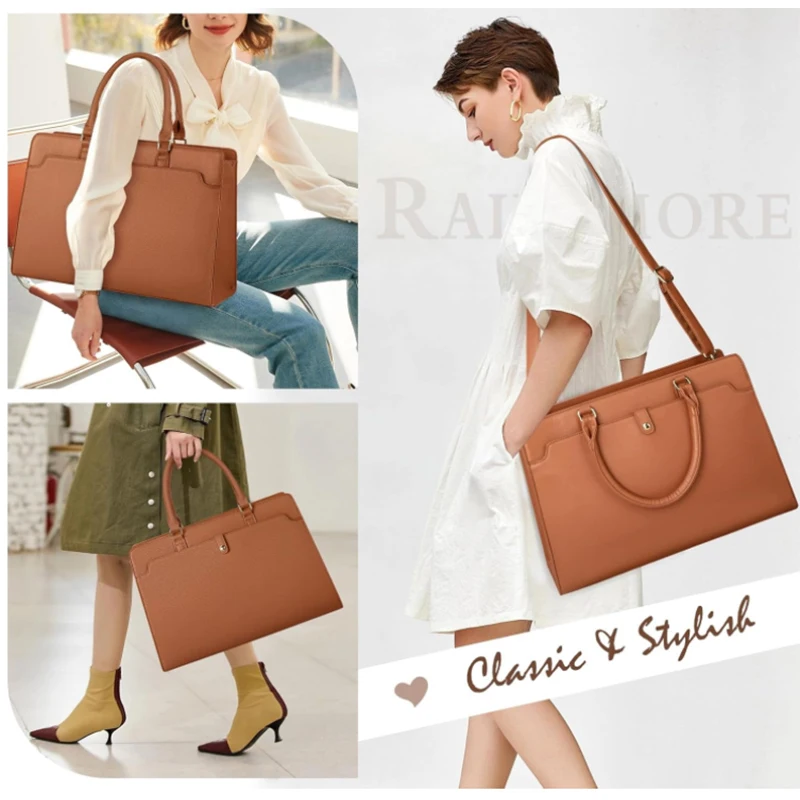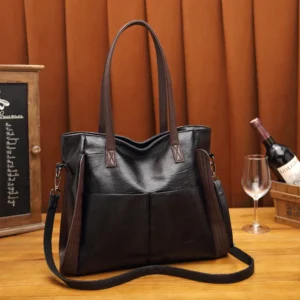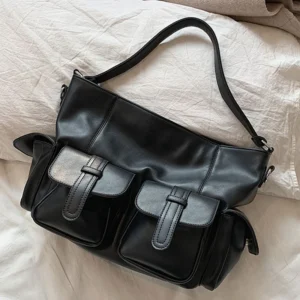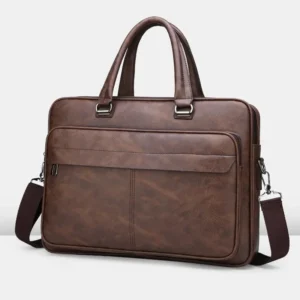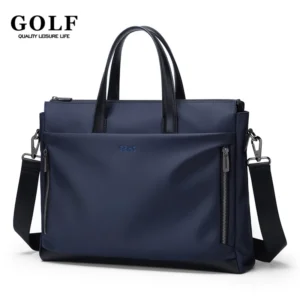What is Vegan Leather?
Vegan leather encompasses all materials designed to mimic the look, feel, and function of animal leather without using any animal products. These alternatives provide the aesthetic appeal and practical benefits of leather while aligning with ethical choices that avoid animal use.
The terminology in this space can be confusing. “Vegan leather” specifically highlights the ethical aspect of being animal-free. “Faux leather” and “leatherette” are older terms focusing on the imitative nature of these materials. “Pleather” (plastic leather) refers specifically to synthetic options made from plastics like polyurethane or PVC.
These alternatives have emerged to address several needs: ethical concerns about animal welfare, environmental considerations regarding livestock impact, and stylistic preferences for leather’s aesthetic without the ethical complications.
Vegan Leather Definition: Materials that mimic the appearance, texture, and functionality of animal leather without containing any animal-derived components.
The development of leather alternatives has evolved significantly over time. Early options were primarily vinyl-based (PVC), with limited resemblance to real leather. Today’s market features sophisticated options ranging from advanced synthetics to innovative plant-based materials derived from pineapple leaves, mushrooms, cacti, and other sustainable sources.
The global market for vegan leather work totes and other alternatives is experiencing remarkable growth, projected to reach $89.6 billion by 2025 as consumers increasingly seek ethical and sustainable options that don’t sacrifice style or functionality.
Why Choose Vegan Leather? Ethical and Environmental Considerations
The decision to choose vegan leather often stems from ethical considerations regarding animal welfare. Traditional leather production requires animal hides—primarily from cattle but also from sheep, goats, pigs, and exotic animals. This direct link to animal farming and slaughter drives many consumers to seek cruelty-free alternatives that don’t contribute to animal suffering.
Environmental considerations also play a significant role. Traditional leather production carries a substantial ecological footprint:
- Livestock farming (particularly cattle) contributes significantly to greenhouse gas emissions, deforestation, and water usage
- The tanning process typically uses chromium and other toxic chemicals that can contaminate water supplies
- Processing a single cowhide can require up to 17,000 liters of water
However, it’s important to recognize that not all vegan leather options are environmentally friendly. Many synthetic alternatives are petroleum-based and may not biodegrade, potentially creating different environmental challenges. The key development in recent years has been the creation of more sustainable vegan options that address both ethical and environmental concerns.
Key Benefits of Choosing Vegan Leather:
- Animal welfare: No animals harmed in production
- Reduced environmental impact (especially with bio-based options)
- Often more affordable than premium animal leather
- Consistent quality without natural variations or blemishes
- Typically requires less maintenance
- Increasing variety of innovative, sustainable options
The growing interest in why choose vegan leather reflects broader consumer trends toward conscious consumption. A recent survey found that 73% of millennial consumers are willing to pay more for sustainable products, driving innovation in this sector. Companies are responding by developing increasingly sophisticated alternatives that satisfy both ethical concerns and quality expectations.
Understanding Traditional vs. Vegan Leather: Key Differences
When comparing traditional leather with vegan alternatives, several key differences emerge in their properties, performance, and overall characteristics:
| Feature | Traditional Leather | Vegan Leather |
|---|---|---|
| Source | Animal hides | Synthetic polymers or plant materials |
| Durability | Generally very durable (15+ years) | Varies widely (2-10+ years) |
| Breathability | Naturally breathable | Limited in synthetics; improving in bio-based |
| Water Resistance | Needs treatment to be waterproof | Often naturally water-resistant |
| Aging Process | Develops patina, often looks better with age | Typically doesn’t develop patina, may crack |
| Maintenance | Requires specific leather care products | Generally easier to clean, less maintenance |
| Environmental Impact | High resource use, chemical tanning | Varies by material (petroleum-based vs. natural) |
| Price Range | Generally more expensive | Usually more affordable (with exceptions) |
One common misconception is that all vegan leathers are inferior in quality to animal leather. While early synthetic alternatives had significant limitations in breathability and durability, modern options—particularly premium and bio-based varieties—have narrowed this gap considerably.
The durability difference is also narrowing. While high-quality animal leather can last decades with proper care, premium vegan options now offer impressive longevity. For instance, high-quality polyurethane leather can last 5-10 years, while innovations like cactus and mushroom leather show promising durability metrics.
Price differences typically favor vegan options at entry and mid-range levels, though premium bio-based alternatives can sometimes exceed the cost of conventional leather due to their innovative production methods and smaller manufacturing scale.
Understanding the differences between various faux and vegan leather options helps consumers make informed choices based on their priorities, whether those are ethical considerations, environmental impact, specific performance characteristics, or budget constraints.
Synthetic Vegan Leathers: The Plastic-Based Options
Polyurethane (PU) Leather
Polyurethane leather is currently the most common synthetic leather alternative on the market. It’s created by applying a polyurethane coating to a fabric backing, usually polyester or cotton, creating a flexible material with a leather-like appearance.
Manufacturing Process:
PU leather production involves creating a polyurethane polymer layer that’s applied to a fabric base. The surface is then treated to achieve different textures and finishes that mimic various leather grains.
Pros:
– More affordable than animal leather
– Good water resistance
– Flexible and soft
– No animal products used
– Lighter than traditional leather
– Available in endless colors and textures
Cons:
– Derived from fossil fuels
– Limited breathability
– Can release microplastics during wear and breakdown
– Typically not biodegradable
– Generally less durable than real leather
Recent innovations include water-based PU systems that reduce solvent use and bio-based polyurethanes that incorporate plant oils to reduce petroleum dependence. These improvements are making PU leather increasingly eco-friendly while maintaining its practical benefits.
Polyvinyl Chloride (PVC) Leather
PVC leather (vinyl) was one of the earliest synthetic leather alternatives. It’s made by applying plasticized polyvinyl chloride to a fabric backing.
Manufacturing Process:
PVC production involves creating flexible vinyl through the addition of plasticizers to rigid PVC, then applying this to a fabric backing. The material is extremely durable but significantly less breathable than PU alternatives.
Pros:
– Very inexpensive
– Highly water-resistant
– Extremely durable
– Easy to clean
Cons:
– Contains phthalates and other potentially harmful chemicals
– Releases dioxins if incinerated
– Very poor breathability
– Stiff feel compared to real leather
– Significant environmental concerns throughout lifecycle
Due to these environmental and health concerns, PVC leather has been decreasing in popularity despite its low cost. Many brands offering high-quality faux leather work totes have moved away from PVC in favor of PU or plant-based alternatives.
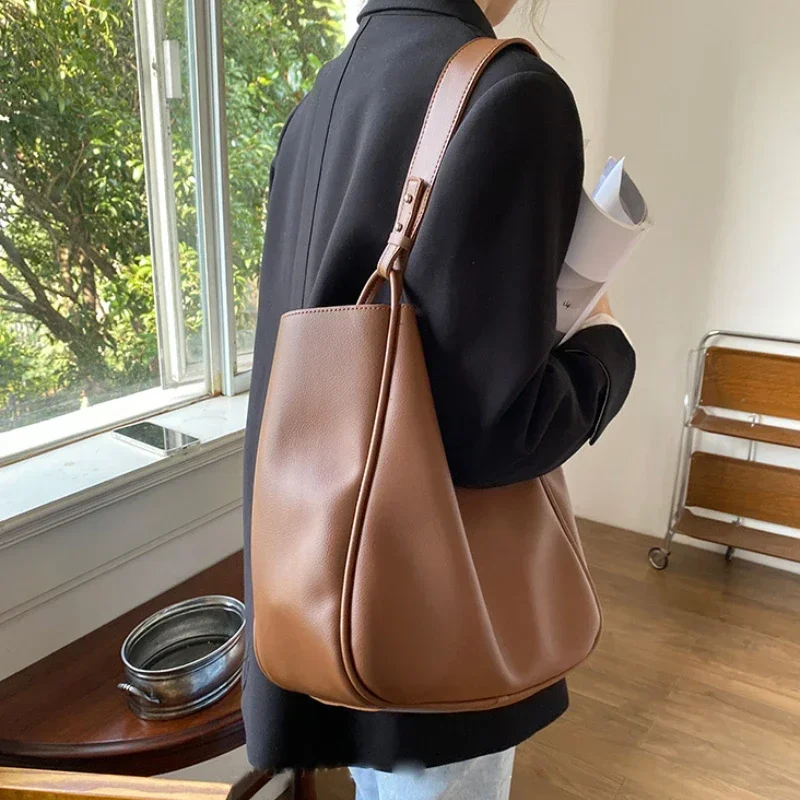
While synthetic options remain the most accessible and affordable vegan leather alternatives, the industry is increasingly focused on improving their environmental profile or developing more sustainable alternatives altogether.
Plant-Based Vegan Leathers: Innovative Natural Alternatives
Piñatex® (Pineapple Leaf Leather)
Piñatex has become one of the most recognized plant-based leather alternatives. Developed by Ananas Anam, this innovative material utilizes the waste leaves from pineapple harvests that would otherwise be burned or left to rot.
Origin & Manufacturing: Piñatex begins with pineapple leaf fibers extracted after harvest. These fibers are processed into a non-woven mesh, which forms the base of the material. The mesh undergoes finishing treatments to create a leather-like material. Most Piñatex products do include a thin polyurethane coating for durability and water resistance.
Characteristics:
– Distinctive fibrous texture that creates a unique aesthetic
– Good durability and moderate water resistance
– Medium weight with good flexibility
– Available in various colors and finishes
Sustainability Profile: Using agricultural waste provides additional income to farming communities and diverts waste from being burned. However, the polyurethane coating means most Piñatex isn’t fully biodegradable.
Mycelium Leather (Mushroom Leather)
Perhaps the most exciting development in plant-based leather alternatives comes from fungi. Mycelium—the root structure of mushrooms—can be grown into custom shapes and textures that remarkably mimic animal leather.
Origin & Brands: Companies like Bolt Threads (Mylo™) and MycoWorks (Reishi™) are leading innovation in this space. These materials are grown rather than manufactured in the traditional sense.
Growing Process: Mycelium is grown on agricultural waste like sawdust or corn stalks in controlled environments. As it grows, it forms an interconnected network that can be guided into specific forms. After sufficient growth, the material is processed and finished to enhance durability and appearance.
Characteristics:
– Remarkably similar feel to animal leather
– Excellent strength-to-weight ratio
– Natural variation creates authentic aesthetic
– Customizable properties during growing process
Luxury fashion houses have partnered with mycelium leather producers, indicating the material’s premium quality and appeal for high-end applications.
Cactus Leather (Desserto®)
Developed by Mexican company Adriano Di Marti, cactus leather utilizes the nopal cactus (prickly pear) to create a sustainable leather alternative.
Origin & Production: Mature cactus leaves are harvested (without killing the plant) every 6-8 months. The organic material is then processed into a powder and combined with non-toxic synthetic materials to create a durable leather-like material.
Characteristics:
– Soft, flexible texture
– Good durability and partial biodegradability
– Highly water-resistant
– Lower environmental footprint than animal leather or synthetic alternatives
Sustainability Benefits: Nopal cacti require minimal water, no irrigation systems, and absorb CO2 while growing. The plants continue producing new leaves after harvest, making this a renewable resource.
Apple Leather
Utilizing waste from the apple juice industry, apple leather represents an innovative circular economy solution.
Origin & Production: Apple leather is made from the pomace and peel waste left after juice production. This waste is dried and ground into a powder, which is then combined with polyurethane and applied to a cotton or polyester backing.
Characteristics:
– Soft, pliable texture
– Contains 20-50% apple waste (varies by manufacturer)
– Lower environmental impact than fully synthetic options
– Similar performance to traditional PU leather
Apple leather exemplifies how eco-friendly work bags and sustainable options can repurpose food industry waste while creating functional, attractive materials for fashion and accessories.
More Innovative Vegan Leather Alternatives
Cork Leather
Cork leather offers one of the most sustainable options in the vegan leather market, derived from the bark of cork oak trees.
Harvesting Process: Cork is harvested by carefully stripping the outer bark from cork oak trees—a process that doesn’t harm the tree and actually promotes new bark growth. The same tree can be harvested multiple times over its 200+ year lifespan, making this a truly renewable resource.
Key Properties:
– Naturally water-resistant
– Extremely lightweight
– Naturally antimicrobial
– Biodegradable
– Each piece has unique patterns and textures
Cork forests in Portugal and Spain are vital ecosystems that support biodiversity while capturing carbon dioxide. By supporting cork products, consumers help maintain these valuable forests.
Grape Leather (Vegea™)
Vegea™ transforms the waste from wine production into a versatile leather alternative.
Origin: Grape leather utilizes the skins, stalks, and seeds left over from wine production—materials that would otherwise be discarded. Italy alone produces over 2.5 million tons of grape waste annually.
Properties:
– Contains no PVC or toxic solvents
– Requires minimal water in production
– Reduces agricultural waste
– Comparable durability to synthetic leather options
Several automotive companies have begun using grape leather for car interiors, demonstrating its durability and premium feel.
Lab-Grown Leather
Bio-fabricated leather represents the cutting edge of material science, using cellular agriculture to grow actual leather without animals.
Process: Companies like Modern Meadow use yeast cells modified with collagen-producing DNA. These cells produce collagen—the primary protein in leather—which is then assembled into structures identical to animal leather.
Benefits:
– Molecularly identical to animal leather
– Customizable properties (thickness, texture, etc.)
– No animals needed
– Reduced environmental impact compared to livestock
– Can be grown to specific sizes, reducing waste
While still in development stages, lab-grown leather holds tremendous promise for combining the performance of real leather with the ethical benefits of vegan alternatives.
Recycled Materials as Leather Alternatives
Innovative companies are transforming existing waste streams into functional leather alternatives:
- Recycled polyester from plastic bottles
- Recycled rubber from tires
- Upcycled textile waste
These options extend the lifecycle of existing materials, reducing waste and resource use while creating functional products. Many stylish vegan leather briefcases now incorporate these recycled materials, combining sustainability with professional aesthetics.
Comprehensive Comparison: How Do Vegan Leathers Stack Up?
When evaluating vegan leather alternatives, several factors determine which option might be best for specific uses and personal priorities:
| Material | Sustainability | Durability | Water Resistance | Breathability | Cost | Feel |
|---|---|---|---|---|---|---|
| PU Leather | Low-Medium | Medium (3-5 yrs) | High | Low | $ | Soft, flexible |
| PVC Leather | Very Low | High (5-8 yrs) | Very High | Very Low | $ | Stiff, plastic-like |
| Piñatex | Medium-High | Medium | Medium | Medium | $$ | Textured, natural |
| Mycelium Leather | Very High | Medium-High | Medium | High | $$$ | Most leather-like |
| Cactus Leather | High | Medium-High | High | Medium | $$$ | Soft, supple |
| Apple Leather | Medium | Medium | Medium-High | Low-Medium | $$ | Smooth, pliable |
| Cork | Very High | Medium | High | High | $$ | Textured, unique |
| Grape Leather | High | Medium | Medium | Medium | $$ | Variable textures |
| Lab-Grown | High | High | Medium-High | High | $$$$ | Identical to leather |
| Recycled Materials | High | Varies | Varies | Varies | $-$$ | Varies by type |
Standout Options By Priority:
- Most Eco-Friendly: Cork, Mycelium Leather
- Most Durable: Lab-Grown, High-quality PU, Cactus Leather
- Most Water-Resistant: PVC, PU, Cork
- Most Breathable: Mycelium Leather, Cork
- Most Budget-Friendly: PU Leather, Recycled Materials
- Most Premium Feel: Mycelium Leather, Lab-Grown, Cactus Leather
This comparison illustrates that no single material excels in all categories. The “best” vegan leather depends on individual priorities and the specific application. For instance, a water-resistant option like PU might be ideal for outdoor use, while breathable cork or mycelium leather might be preferable for items worn close to the skin.
How to Evaluate Vegan Leather Claims: Avoiding Greenwashing
As demand for sustainable products grows, so does the potential for misleading marketing. “Greenwashing” occurs when companies make their products seem more environmentally friendly than they actually are.
In the vegan leather market, common misleading claims include:
- Labeling materials as “eco-friendly” without substantiating evidence
- Using terms like “plant-based” for products with minimal plant content
- Highlighting the absence of animal products while ignoring environmental impacts
- Using vague terms like “sustainable” without specifics
To make informed choices, consider this checklist when evaluating vegan leather products:
- Material Composition: What percentage of the material is actually plant-based or recycled? Many “plant-based” leathers still contain significant amounts of synthetic materials.
- Backing Materials: What fabric is used as backing? Even if the coating is innovative, a petroleum-based polyester backing affects sustainability.
- Production Transparency: Does the brand disclose manufacturing processes and locations?
- End-of-Life Considerations: Is the material biodegradable? Recyclable? What happens when the product is no longer usable?
- Certifications: Look for credible third-party verifications like Global Recycled Standard (GRS), OEKO-TEX Standard 100, or Cradle to Cradle certification.
Understanding the complete picture of various vegan leather alternatives helps consumers see beyond marketing claims and make truly sustainable choices.
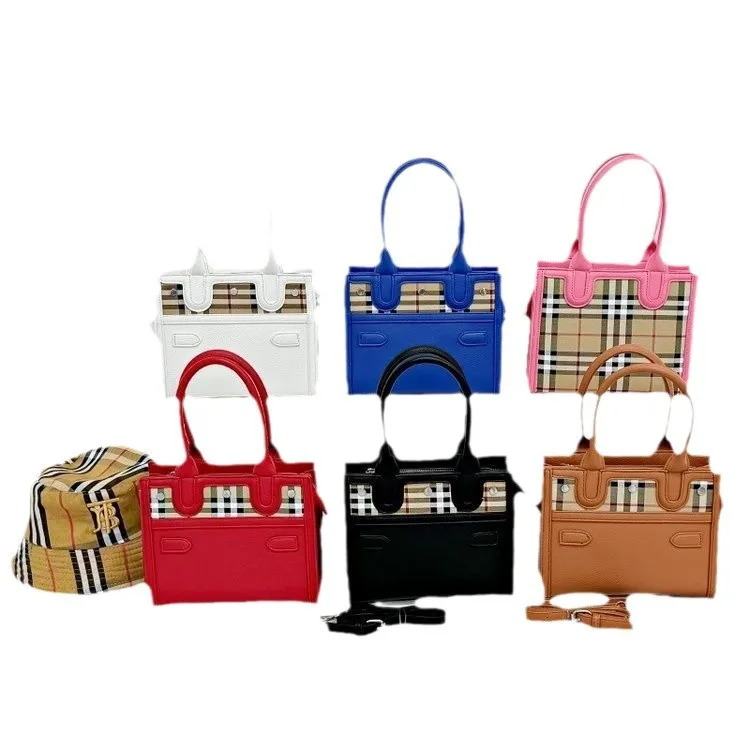
Caring for Your Vegan Leather: Maintenance Tips and Longevity
Proper care significantly extends the life of vegan leather products, enhancing their sustainability by reducing replacement frequency.
General Care Principles:
– Clean regularly with a damp cloth to prevent dirt buildup
– Avoid harsh chemicals and abrasive cleaners
– Keep away from direct sunlight when not in use
– Store in a cool, dry place with adequate air circulation
– Use appropriate conditioners designed for synthetic materials
Material-Specific Care:
For Synthetic Vegan Leathers (PU/PVC):
– Clean with mild soap and water
– Apply specialized synthetic leather conditioner every 2-3 months
– Avoid alcohol-based cleaners which can dry and crack the material
– Use a UV protectant spray for items frequently exposed to sunlight
For Plant-Based Options:
– Follow brand-specific care instructions as requirements vary
– Most can be gently cleaned with a damp cloth and mild soap
– Test any products on an inconspicuous area first
– Cork benefits from occasional application of cork-specific conditioner
For Special Materials (Cork, Piñatex):
– Use specialty cleaners recommended by the manufacturer
– Apply appropriate waterproofing sprays designed for these materials
– Handle with clean hands to prevent oil transfer
When damage occurs, address it promptly. Small tears in synthetic leathers can sometimes be repaired with vinyl repair kits. For plant-based materials, consult the manufacturer for repair recommendations.
Understanding how durable faux leather work bags can be with proper care helps consumers maximize their investment while minimizing environmental impact through extended product life.
The Future of Vegan Leather Innovation
The vegan leather industry stands at the exciting intersection of material science, sustainability, and ethical consumption. Current research focuses on several promising directions:
Fully Biodegradable Synthetics: Researchers are developing polyurethane alternatives derived entirely from plant oils that maintain performance while being biodegradable at end-of-life.
Enhanced Bio-Content: Many companies are working to increase the percentage of natural materials in their products, reducing dependence on synthetic components while maintaining durability.
Scalability Solutions: As demand grows for materials like mycelium leather, significant investment is flowing into technologies that allow mass production without compromising sustainability.
Waste Stream Materials: Innovative startups are exploring unexpected waste materials as leather alternatives—from coffee grounds to pineapple leaves to mangoes and beyond.
Circular Systems: The most promising developments involve designing materials from the outset for recycling or composting, creating closed-loop systems.
Consumer demand continues to be the primary driver of innovation. As buyers increasingly select products based on both ethics and aesthetics, brands are responding with improved options. Even traditional timeless classic leather briefcase manufacturers are exploring alternative materials to appeal to changing consumer preferences.

The future likely holds materials that not only match traditional leather’s performance but exceed it—with customizable properties, improved sustainability metrics, and innovative production methods that minimize environmental impact.
Black Leather Satchel, Brown Leather Satchel, Vegan Leather Work Tote
Price range: $69.58 through $73.23 Select options This product has multiple variants. The options may be chosen on the product pageBlack Leather Messenger Bag, Black Leather Work Tote, Faux Leather Work Tote
$101.88 Select options This product has multiple variants. The options may be chosen on the product pageBlack Leather Work Tote, Faux Leather Work Tote, Women's Leather Business Tote
Price range: $88.81 through $93.85 Select options This product has multiple variants. The options may be chosen on the product pageBlack Leather Satchel, Faux Leather Work Tote, Vegan Leather Work Tote
$120.38 Select options This product has multiple variants. The options may be chosen on the product pageMen's Slim Leather Briefcase, Slim Leather Laptop Briefcase, Vegan Leather Briefcase
Price range: $120.82 through $131.11 Select options This product has multiple variants. The options may be chosen on the product pageClassic Laptop Briefcase, Vegan Leather Briefcase
$244.29 Select options This product has multiple variants. The options may be chosen on the product page
Is Vegan Leather Right for You? Making an Informed Decision
Choosing between traditional leather and vegan alternatives ultimately depends on your personal priorities. Consider these questions to guide your decision:
Environmental Priorities: Do you prioritize biodegradability, carbon footprint, or water usage? Different vegan leathers excel in different environmental metrics.
Performance Needs: How long do you expect the item to last? Will it face harsh conditions? Some vegan options match traditional leather’s durability while others may have shorter lifespans.
Budget Considerations: What’s your price range? Traditional leather typically commands premium prices, while synthetic vegan options are more affordable. However, innovative plant-based options can sometimes exceed animal leather in cost.
Aesthetic Preferences: Do you value the unique patina that animal leather develops over time? Most vegan options won’t develop this characteristic aging pattern, though they offer consistent appearance throughout their lifespan.
Practical Framework:
- For everyday items needing flexibility and water resistance: High-quality PU leather
- For premium items with sustainability focus: Mycelium, cactus, or cork leather
- For budget-conscious but eco-aware choices: Recycled materials or Piñatex
- For professional items needing sophisticated appearance: Cactus leather or premium PU options
Many professionals find that vegan leather messenger bags offer an ideal balance of professional appearance, functionality, and ethical considerations for daily use.
FAQ: Common Questions About Vegan Leather
Is vegan leather as durable as real leather?
Durability varies widely among vegan leather types. High-quality synthetic options can last 5-10 years with proper care, while premium plant-based and bio-fabricated leathers continue to improve in longevity. Traditional leather typically lasts longer (10-30 years) but requires more maintenance.
Are there any fully biodegradable vegan leathers?
Yes, several options offer biodegradability. Cork leather is naturally biodegradable, while some mycelium leathers can decompose in industrial composting facilities. Most synthetic and hybrid materials (like Piñatex with PU coating) are not fully biodegradable.
How can I tell if a product is made from vegan leather?
Check product descriptions for terms like “vegan leather,” “faux leather,” “synthetic leather,” or specific material names like “PU leather” or “Piñatex.” Genuine leather will typically be labeled as “real leather,” “full-grain leather,” “top-grain leather,” or specify the animal source.
Does vegan leather stretch like real leather?
Most vegan leathers don’t stretch or conform to use patterns the way animal leather does. Some newer bio-based options have more natural give, but generally, vegan leather maintains its original shape better than animal leather.
Is vegan leather waterproof?
Many synthetic vegan leathers (especially PU and PVC) offer excellent water resistance, often exceeding that of untreated animal leather. Plant-based options vary—cork has natural water resistance, while others may require protective treatment.
Which vegan leather looks most like real leather?
Mycelium (mushroom) leather currently offers the most convincing leather-like appearance and texture. High-end cactus leather and some premium PU options also provide very realistic alternatives, especially for stylish cruelty-free tote bags and other fashion accessories.
Finding Quality Vegan Leather Products: What to Look For
When shopping for high-quality vegan leather items, pay attention to these key indicators:
Construction Quality Indicators:
– Even, consistent stitching with no loose threads
– Reinforced stress points at handles and corners
– Clean, finished edges (not raw or unfinished)
– Smooth, consistent coloring without patchy areas
– Hardware that’s firmly attached with reinforced mounting points
Material Quality Factors:
– Thickness appropriate for the item’s purpose
– Consistent texture throughout the surface
– Backing fabric that’s tightly bonded to the coating
– No chemical odor (may indicate poor quality or excessive plasticizers)
– Flexibility without cracking or stretching
Brand Transparency:
– Clear identification of materials used
– Specific percentages for plant-based content if applicable
– Manufacturing information and ethical commitments
– Reasonable warranty offerings that indicate confidence in quality
Quality vegan leather products range widely in price. Basic synthetic options might start around $30-50 for small accessories, while premium plant-based non-leather work bags can range from $100-300+, reflecting their innovative materials and construction quality.
The good news is that as consumer demand grows and production scales up, many higher-quality vegan leather options are becoming more accessible at mid-range price points, offering excellent value compared to traditional leather while aligning with ethical and environmental values.

